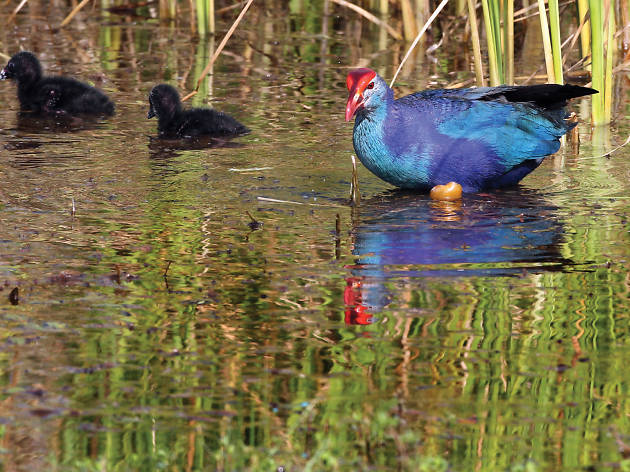BUNDALA HALF DAY SAFARI
Half Day Game drive to Bundala National Park is a 3 hours game viewing opportunity with Beyond Escapes Safari Team. This is an important wintering ground for migratory water birds. The area was declared a wildlife sanctuary on 5 December 1969, and was upgraded to a national park on 4 January 1993 with land area of 6,216 hectares (24.00 sq mi). However, the park was regazetted in 2004 and the original park was reduced to 3,698 hectares (14.28 sq mi). In 2005 the park was designated as a biosphere reserve by UNESCO, also designated a RAMSAR wetland its home to many migratory water birds in Sri Lanka. In January 2006, an area adjacent to Bundala covering an area of 3,339.38 hectares (12.8934 sq mi) was declared as the Wilmanna Sanctuary.
The Bundala National Park has been identified as an outstanding Important Bird Area in the South Indian and Sri Lankan wetlands. 324 species of vertebrates have been recorded in the national park, which include 32 species of fish, 15 species of amphibians, 48 species of reptiles, 197 species of birds and 32 species of mammals. 52 species of butterflies are among the invertebrates. The wetland habitats in Bundala harbours about 100 species of water birds, half of them being migrant birds. Of 197 avifaunal species 58 are migratory species. National Bird Ringing Programme (NBRP) was launched in Bundala by in collaboration of Department of Wildlife Conservation and Field Ornithology Group of Sri Lanka in 2005.
The most famous visitor being the greater flamingo’s which arrives in large flocks up to a thousand birds at a time is, making a cacophony of noise with their feeding and covering the entire area of the main Bundala lagoon with a pinkish threadbare carpet, truely a sight to behold. Waterfowl (lesser whistling duck Dendrocygna javanica, garganey Anas querquedula), cormorants (little cormorant Phalacrocorax niger, Indian cormorant P. fuscicollis), large water birds (grey heron Ardea cinerea, black-headed ibis Threskiornis melanocephalus, Eurasian spoonbill Platalea leucorodia, Asian openbill Anastomus oscitans, painted stork Mycteria leucocephala), medium-sized waders (Tringa spp.), and small waders (Charadrius spp.) are the other avifaunal species which are present in large flocks. Black-necked stork Ephippiorhynchus asiaticus, lesser adjutant Leptoptilos javanicus and Eurasian coot Fulica atra are rare birds inhabit in the national park.
A few Asian elephants (Elephas maximus) still inhabit the forests of Bundala. Other mammals seen in the park are toque macaque Macaca sinica, common langur Presbytis entellus, jackal Canis aureus, leopard Panthera pardus, fishing cat Felis viverrinus, rusty-spotted cat Felis rubiginosa, mongoose Herpestes spp., wild boar Sus scrofa, mouse deer Tragulus meminna, Indian muntjac Muntiacus muntjak, spotted deer Cervus axis, sambar C. Unicolor, black-naped hare Lepus nigricollis, Indian pangolin Manis crassicaudata, and porcupine Hystrix indica.
Bundala harbors various forms of fishes including salt water dispersants Anguilla bicolor, marine forms Ambassis gymnocephalus, brackish water forms Chanos chanos and freshwater forms Channa striata. Bundala's herpetofauna includes two endemic species, a toad and a snake, Bufo atukoralei and Xenochrophis asperrimus. Among reptiles are mugger crocodile Crocodylus palustris, estuarine crocodile Crocodylus porosus, common monitor Varanus bengalensis, star tortoise Geochelone elegans, python Python molurus, rat snake Pytas mucosus, endemic flying snake Chrysopelea taprobana, cat snakes Boiga spp. and whip snakes Dryophis spp. The adjacent seashore of Bundala is a breeding ground for all five species of globally endangered sea turtles that migrate to Sri Lanka.
Occasional Elephant, Spotted Deer, Sambar, Hanuman Langur, Toque Monkey, Stripe-necked and Ruddy Mongooses, Wild Boar, Golden Jackal, Land and Water Monitor and Marsh Crocodile can be seeing most of the time during your Safari. We provide light refreshments and water bottles during the safari.
Day Tours
See more
See less
Round Tours
See more
See less
Things To Do
See more
See less

